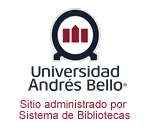Una comprensión de la realidad en clave neoplatónica. Dos pasajes del De ordine de San Agustín
Palabras clave:
San Agustín, neoplatonismo, mal, estética, Antigüedad tardíaResumen
Comprender la realidad del mundo para luego justificar la vía de la interioridad, la interacción entre “conocer” y “conocerse”, constituye el núcleo sapiencial agustiniano. De ordine nos ubica justo en sus inicios en diálogo con el neoplatonismo. El texto se refiere a la Providencia y entonces al ordo rerum, aparentemente rebatido por el escándalo del mal; en efecto, no resulta posible afirmar que nada sucede fuera de la Providencia, si el acontecimiento originario del mal no puede reconducirse al orden de Dios. Agustín recurre al argumento estético: se apaga la luz del ser para quien no es capaz de gozar plenamente la belleza. Ello requiere, ya desde Platón, de una ascesis de los sentidos, que aquí se mantiene mediante el estudio asiduo de las artes liberales. Dos pasajes nos permiten calibrar los accesos agustinianos al conjunto de lo real: el rumor del agua a medianoche y una riña de gallos.
Descargas
Referencias
Agustín de Hipona. Obras, vol. 1, Del orden. Madrid: B.A.C., 1969.
Agustín de Hipona. Confesiones. Madrid: B.A.C., 2010.
Agustín de Hipona. Interpretación literal del Génesis. Introducción, traducción y notas de Claudio Calabrese. Pamplona: EUNSA (Colección de Pensamiento Medieval y Renacentista), 2006.
Agustín de Hipona. Augustins Schrift De ordine. Introducción y comentarios de Jörg Trelenberg. Tübingen: Mohr Siebeck, 2009.
Agustín de Hipona. Contra los académicos. Introducción y traducción (edición bilingüe) de Jaime García Álvarez y Julio García Álvarez. Madrid: Ediciones Encuentro, 2009.
Agustín de Hipona. Obras, vol. XL, Retractaciones. Madrid: BAC, 1995.
Adriasola, Juan José. “Tradición y totalización: problemas de historiografía literaria”. Revista de Humanidades, n.º 33, 2016, 11-38.
Beierwaltes, Werner. Selbsterkenntnis und Erfahrung der Einheit. Plotins Enneade V. Frankfurt: M. Klostermann, 1991.
Brown, Peter. Augustine of Hippo: a biography. Londres: Faber and Faber, 1967.
Calabrese, Claudio César. “Los supuestos hermenéuticos de Agustín de Hipona. Desentrañar la palabra y transmitir su misterio”. Espíritu, año 64, nº 150, 2015, 227-43.
Catapano, Giovanni. Il concetto di filosofía nei primi scritti di Agostino. Analisi dei passi metafilosofici dal “Contra Academicos” al “De vera religione”. Roma: Institutum Patristicum Augustinianum, 2001.
Crîsmareanu, Florin. “Par le feu et [par] la lumière: Deux Métaphores Maximiennes. Sources, Réception, Significations”. Classica & Christiana, n.° 12, 2017, 119-36.
Crouse, Robert. “Paucis mutatis verbis: St. Augustine’s Platonism”, Augustine and His Critics: Essays in Honour of Gerald Bonner. Editado por Robert Dodaro y George Lawless. Nueva York: Routledge, 2000, 37-50.
Flasch, Kurt. Augustin. Einführung in sein Denken. Stuttgart: Reclam Verlag, 1980.
Gilson, Étienne. Introduction à l’étude de Saint Augustine. París: Vrin, 1929.
Isler Soto, Carlos. “El tiempo en las Confesiones de San Agustín”. Revista de Humanidades, n.° 17-18, 2008, 187-99.
Junco de Calabrese, Ethel. “La belleza en el cuento maravilloso”. Espíritu, año 66, n.º 153, 2017, 185-203.
Löwith, Karl. Gott, Mensch und Welt in der Metaphysik von Descartes bis zu Nietzsche, Göttingen: Vandenhoeck & Ruprecht, 1967.
Marrou, Henri Iréné. Saint Augustin et la Fin de la Cultura Antique. París: Éditions de Boccard, 1983.
Moreschini, Claudio. Storia del pensiero cristiano tardo-antico. Milano: Bompiani, 2013.
Moser, Christian. Buchgestützte Subjektivität: Literarische Formen der Selbstsorge und der von Selbsthermeneutik Platon bis Montaigne. Tübingen: Max Niemeyer Verlag, 2006.
Munier, Charles. Justin martyr. Apologie pour les chrétiens. París: Édition du Cerf, 2006.
Pierantoni, Claudio. “Ser en relación y conocimiento de sí en San Agustín y en Plotino”. Teología y Vida, vol. 56, n° 4, 2015, 431-60.
Plotino. Enéada. Introducción, traducción y notas de Jesús Igal. Madrid: Gredos, 1998.
Santa Biblia. Traducción y notas de monseñor Juan Straubinger. La Plata: Universidad Católica de la Plata, 2016.
Sohn, Hohyun. “The Beauty of Hell? Augustine’s Aesthetic Theodicy and Its Critics”. Theology Today, vol. 64, n.° 1, 2007, 47-57.
Teske, Roland. “Augustine as Philosopher. The Birth of Christian Metaphysics”. To Know God and the Soul: Essays on the Thought of Saint Augustine. Washington: Catholic University of America Press, 2008, 3-24.
Thompson, Samantha. “What Goodness Is: Order as Imitation of Unity in Augustine”, The Review of Metaphysics, vol. 65, n° 3, 2012, 525-53.
Torallas Tovar, Sofía. “El hábito monástico en Egipto y su simbología”, ILU Revista de Ciencias de las Religiones, n.° 7, 2002, 163-74.
Trout, Dennis. “Augustine at Cassiciacum: Otium honestum and the Social Dimensions of Conversion”, Vigiliae Christianae, vol. 42, n° 2, 1988, 132- 46.
Virgile, Énéide. Preparado y traducido por Jacque Perret. París: Les Belles Lettres, 1977.
Publicado
Número
Sección
Licencia

Esta obra está bajo una licencia internacional Creative Commons Atribución-NoComercial-SinDerivadas 4.0.
You are free to:
- Share — copy and redistribute the material in any medium or format for any purpose, even commercially.
- Adapt — remix, transform, and build upon the material for any purpose, even commercially.
- The licensor cannot revoke these freedoms as long as you follow the license terms.
Under the following terms:
- Attribution — You must give appropriate credit , provide a link to the license, and indicate if changes were made . You may do so in any reasonable manner, but not in any way that suggests the licensor endorses you or your use.
- No additional restrictions — You may not apply legal terms or technological measures that legally restrict others from doing anything the license permits.
Notices:
You do not have to comply with the license for elements of the material in the public domain or where your use is permitted by an applicable exception or limitation .
No warranties are given. The license may not give you all of the permissions necessary for your intended use. For example, other rights such as publicity, privacy, or moral rights may limit how you use the material.













